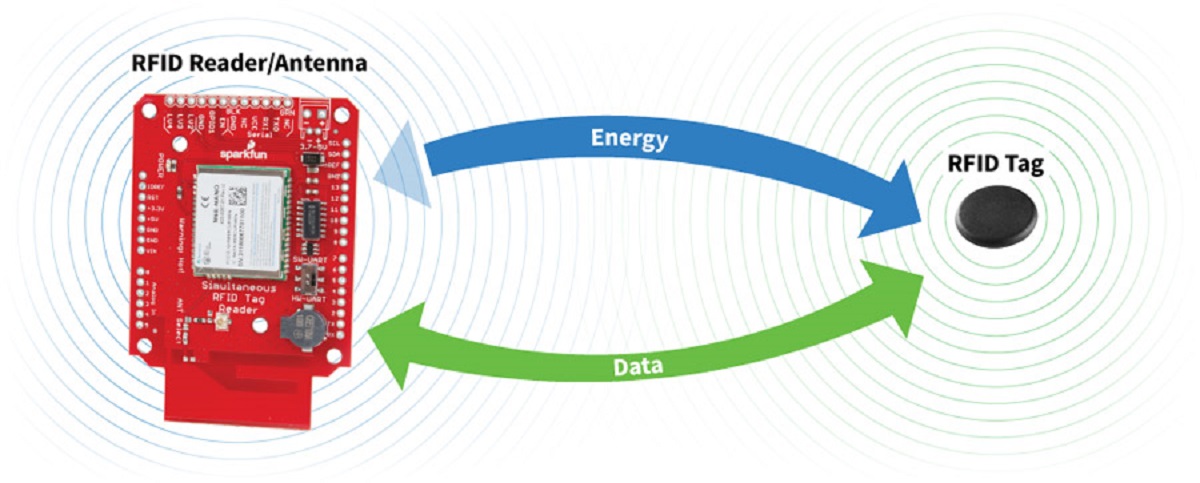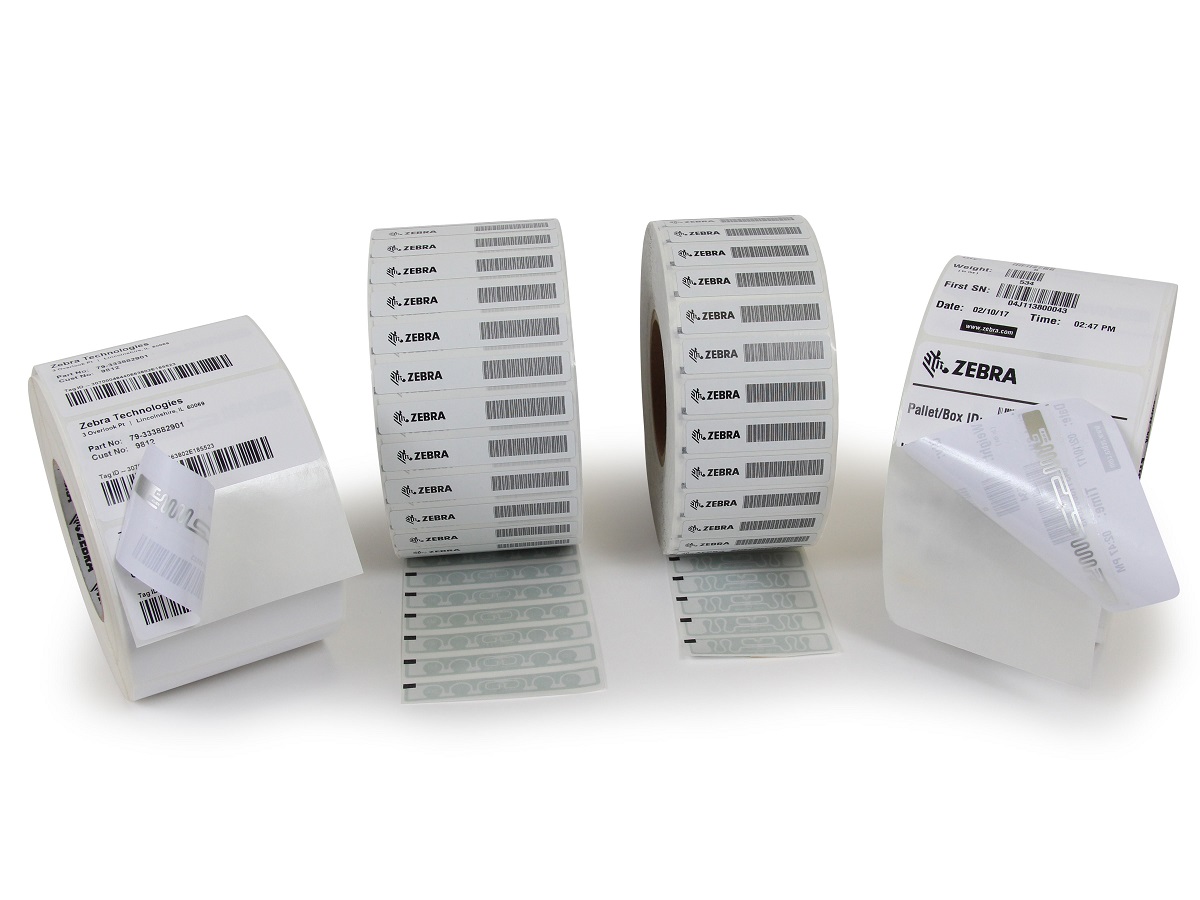Introduction
Rainbow frogs, flying cars, and self-cleaning houses may still be the stuff of science fiction, but one technological advancement that is very much a reality is RFID – Radio Frequency Identification. RFID is a powerful technology that allows for the efficient tracking and identification of objects using radio waves. By attaching small, wireless tags to items, businesses and individuals can keep track of inventory, monitor assets, and improve overall efficiency.
Among the various types of RFID systems, one commonly used configuration is the Active Reader Passive Tag (ARPT) system. This system combines an active reader, which generates and emits radio waves, with passive tags, which receive and respond to these waves. By understanding the concept and working principles behind ARPT, we can better appreciate the advantages it offers and its applications in various fields.
This article aims to provide a comprehensive understanding of ARPT systems, including their functionality, advantages, limitations, and applications. Whether you are curious about how your next online purchase arrives at your doorstep or interested in the future possibilities of this technology, read on to dive into the fascinating world of Active Reader Passive Tag systems.
What is RFID?
RFID, short for Radio Frequency Identification, is a technology that uses electromagnetic fields to identify and track objects. Unlike traditional barcode systems that require line-of-sight scanning, RFID enables wireless and contactless identification of items. It consists of three main components: tags, readers, and a backend system.
RFID tags are small, electronically powered devices that are attached to or embedded within objects. These tags contain a microchip and an antenna, and can store and transmit data wirelessly. RFID readers, also known as interrogators, are devices that emit radio waves and capture the information transmitted by the tags. The backend system comprises software and databases that process and manage the data collected from the RFID system.
When an RFID tag comes within the range of a reader’s radio waves, it receives energy from the reader and is activated. The activated tag then transmits its unique identifier or other relevant data back to the reader, which is then forwarded to the backend system for further processing.
There are two main types of RFID systems: active and passive. Active RFID systems use tags with a built-in power source, such as a battery, to transmit data over longer distances. On the other hand, passive RFID systems rely on the power provided by the reader to activate the tag and transmit information. It is within the realm of passive RFID technology that the Active Reader Passive Tag (ARPT) system operates.
RFID technology has revolutionized various industries, including supply chain management, logistics, retail, healthcare, and agriculture. It offers numerous benefits, such as enhanced inventory visibility, increased operational efficiency, improved security, and reduced errors. As a result, RFID has become an integral part of modern businesses, enabling them to streamline operations and provide better customer experiences.
Understanding Active Reader Passive Tag (ARPT)
The Active Reader Passive Tag (ARPT) system is a configuration of RFID technology that combines an active reader with passive tags. In this system, the reader generates and emits radio waves, while the passive tags receive and respond to these waves without their own power source. This combination allows for efficient and cost-effective tracking and identification of objects.
In an ARPT system, the active reader serves as the central hub, creating a field of radio waves that energizes the passive tags within its range. The passive tags, equipped with an antenna and a microchip, use the energy from the reader to power up and transmit their stored data back to the reader.
The primary advantage of using ARPT technology is its extended range and improved read rates compared to traditional passive RFID systems. Due to the active reader’s ability to generate a stronger signal, ARPT systems can achieve longer read distances, allowing for the identification and tracking of items even in large spaces or challenging environments.
Furthermore, ARPT systems can simultaneously read multiple tags within their range, making high-volume and quick inventory or asset tracking possible. This is particularly beneficial in scenarios where a large number of items need to be scanned at once, increasing operational speed and efficiency.
Unlike active RFID systems where the tags have their power source, ARPT tags are cost-effective and low maintenance. They do not require batteries or external power, reducing the overall cost of implementation and eliminating the need for tag replacement due to battery life depletion.
It is worth noting that ARPT systems are highly configurable, allowing users to adjust the transmission frequency, power levels, and other parameters to optimize performance in their specific application. This flexibility ensures that the system can adapt to diverse environments and meet the unique requirements of various industries.
ARPT technology has gained popularity in different sectors, including transport and logistics, asset management, and access control systems. With its extended range, multiple tag reading capability, and cost-effectiveness, ARPT systems offer a reliable and scalable solution for companies seeking to improve their operations through RFID technology.
How does an ARPT system work?
An Active Reader Passive Tag (ARPT) system utilizes an active reader and passive tags to enable efficient tracking and identification of objects. Understanding how this system works involves grasping the interactions between the active reader, the passive tags, and the underlying technology.
ARPT systems operate based on radio frequency communication. The active reader, which emits radio waves, creates a field within its operational range. This field serves two essential functions: energizing the passive tags and receiving data from them.
When a passive tag enters the field generated by the active reader, it is energized by the radio waves. The tag’s antenna captures the energy and powers up the embedded microchip. Once activated, the passive tag can now transmit its stored data back to the reader.
The communication between the active reader and the passive tags in an ARPT system occurs via the modulation and demodulation of radio waves. The active reader emits a continuous wave signal containing specific information, such as the identification number or other relevant data. The passive tags receive this signal, demodulate it, and analyze its content.
After extracting the information from the received signal, the passive tags encode and modulate their responses. The response includes the unique identification number or any other data stored within the tag’s memory. The modulated signal is then transmitted back to the active reader.
The active reader, upon receiving the response from the passive tags, demodulates and decodes the signal to retrieve the data. This data can be further processed, analyzed, and utilized for various applications. The decoded information can include details about the tag’s identity, location, status, or any other predefined parameters.
ARPT systems can handle communication with a large number of passive tags simultaneously. This capability allows for rapid and efficient identification and tracking of multiple objects within the field of the active reader. It significantly improves the speed and accuracy of inventory management, asset tracking, and other related processes.
The effectiveness of an ARPT system depends on factors such as the range of the active reader, the power output of the reader, and the sensitivity of the passive tags. Optimizing these parameters ensures reliable communication between the active reader and the passive tags, maximizing the performance and capabilities of the entire system.
Overall, ARPT systems provide a robust and efficient solution for tracking and identification purposes, offering significant advantages over traditional passive RFID systems.
Advantages of using ARPT
The utilization of an Active Reader Passive Tag (ARPT) system offers several advantages that make it a preferred choice for various applications. These advantages stem from the unique characteristics and functionality of ARPT technology, providing businesses with enhanced capabilities and improved operational efficiency. Here are some key advantages of using ARPT:
- Extended Read Range: ARPT systems utilize active readers that emit stronger radio signals compared to traditional passive RFID systems. This extended read range enables the identification and tracking of objects over longer distances. It is particularly useful in applications such as asset management in large warehouses or tracking items across vast outdoor areas.
- Multiple Tag Reading: ARPT systems have the ability to read multiple passive tags simultaneously. This feature allows for the quick and efficient scanning of numerous items within the reader’s range. It significantly increases operational speed and reduces the time required for inventory management, asset tracking, and other related processes.
- Cost-Effective: ARPT tags, being passive, do not require their power source or internal batteries. This eliminates the need for periodic battery replacement and reduces the overall maintenance costs associated with the system. The absence of batteries also makes ARPT tags smaller and lighter, making them suitable for applications where size and weight are critical factors.
- Scalability: ARPT systems are highly scalable, allowing for easy expansion and integration with existing infrastructure. Businesses can add more active readers, increase the number of passive tags, and adjust the system parameters to accommodate their growing needs. The scalability of ARPT systems makes them adaptable to different environments and ensures compatibility with future requirements.
- Improved Data Accuracy: The use of ARPT technology minimizes errors and enhances data accuracy. As active readers generate a stronger and more stable signal, the likelihood of tag misreads or failures is significantly reduced. This improved data accuracy leads to precise inventory control, reliable asset tracking, and better decision-making processes.
- Real-Time Tracking: ARPT systems enable real-time tracking of objects within their range. By continuously communicating with the passive tags, active readers can provide instant updates on the locations and statuses of items. This real-time tracking capability is essential for time-sensitive applications, such as supply chain management, where knowing the exact location of goods is crucial.
With these advantages, ARPT systems offer businesses a versatile and powerful tool for optimizing operations, improving efficiency, and enhancing overall productivity. Whether it’s in warehouses, retail environments, or other industries, the utilization of ARPT technology brings significant benefits and unlocks new possibilities for effective tracking and identification of objects.
Limitations of ARPT technology
While the Active Reader Passive Tag (ARPT) system offers numerous advantages, it is important to acknowledge its limitations as well. Understanding these limitations is crucial for businesses and organizations when considering the implementation of ARPT technology. Here are some key limitations of ARPT:
- Limited Read Range: Compared to active RFID systems, the read range of ARPT systems is typically more limited. The signal strength of the active reader, though stronger than passive readers, still has a finite range. This limitation may restrict the use of ARPT technology in applications that require tracking objects over long distances or in large areas.
- Reliance on Reader Power: Since passive tags in ARPT systems do not have their power source, they rely entirely on the energy provided by the active reader to function. If the reader’s power supply or connectivity is interrupted, the tags may become inactive and lose their ability to transmit data. This dependency on reader power can present challenges in situations where a continuous power supply is not guaranteed.
- Interference and Signal Reflection: ARPT systems can be susceptible to interference and signal reflection, especially in environments with high levels of electromagnetic noise or metallic surfaces. Nearby electrical equipment, machinery, or metal structures can disrupt the smooth propagation of radio waves and weaken the communication between the active reader and the passive tags. Implementing proper shielding and mitigation techniques can help minimize these issues.
- Tag Collision: In scenarios where a large number of passive tags are present within the range of an active reader, tag collisions can occur. Tag collisions happen when multiple tags transmit their data at the same time, leading to overlapping signals and potential data corruption. Proper anti-collision algorithms and techniques must be employed to mitigate this issue and ensure accurate data capture and interpretation.
- Cost and Scalability: In certain applications, the cost of implementing ARPT technology may be higher compared to passive RFID systems. This is due to the added complexity and higher cost of active readers, as well as the need for an infrastructure capable of supporting the power requirements of the readers. Additionally, scaling up an ARPT system may involve additional costs and considerations, such as the need for more active readers and potential modifications to the infrastructure.
While these limitations exist, it is important to note that advancements in technology continue to address many of these challenges. Through ongoing research and development, the limitations of ARPT systems are being reduced, thereby expanding their feasibility and applicability in various industries.
By acknowledging and understanding these limitations, businesses can make informed decisions, develop appropriate strategies, and implement mitigation measures to optimize the benefits of ARPT technology while minimizing its potential constraints.
Different applications of ARPT
The Active Reader Passive Tag (ARPT) system finds numerous applications across various industries, offering a versatile solution for tracking, identification, and management purposes. Here are some key areas where ARPT technology is commonly utilized:
- Inventory Management: ARPT systems play a vital role in inventory management, enabling businesses to accurately track and monitor their stock levels. By attaching passive tags to individual items or containers, companies can efficiently count and locate inventory items, reduce stock discrepancies, and streamline replenishment processes. The extended read range and multiple tag reading capabilities of ARPT systems make it easier for businesses to track inventory in large warehouses or storage facilities.
- Asset Tracking: ARPT technology is widely used for asset tracking in industries such as logistics, healthcare, and manufacturing. By affixing passive tags to equipment, vehicles, or high-value assets, organizations can gain real-time visibility into their assets’ locations and statuses. This allows for improved asset utilization, theft prevention, and proactive maintenance to ensure optimal operational efficiency.
- Access Control: ARPT systems are employed in access control applications to enhance security measures for restricted areas. By integrating ARPT technology with authentication systems, businesses can control and monitor access to premises, ensuring that only authorized personnel can enter specific areas. ARPT-based access control systems provide a higher level of security compared to traditional methods, as the tags can be easily deactivated or reprogrammed, and real-time access logs can be maintained.
- Supply Chain Management: ARPT technology plays a crucial role in supply chain management by providing real-time tracking and visibility of products throughout the entire supply chain. From manufacturing to distribution and retail, ARPT systems enable businesses to track goods, monitor their storage conditions, and optimize supply chain processes. This results in improved efficiency, reduced inventory holding costs, faster response times, and enhanced customer satisfaction.
- Vehicle Identification: ARPT technology is employed in applications such as toll collection, parking management, and vehicle tracking. By attaching passive tags to vehicles, ARPT systems enable automated identification and tracking. This improves traffic flow, reduces congestion, and increases operational efficiency in transportation systems. It also facilitates seamless access to toll roads, parking facilities, and restricted areas without the need for manual intervention.
- Container Tracking: ARPT systems are utilized in tracking the movement of shipping containers across different ports and transportation hubs. By affixing passive tags to containers, ARPT technology enables accurate and efficient tracking of containers as they move through various stages of the supply chain. This ensures better container visibility, reduces the risk of loss or theft, and enhances overall container management processes.
These are just a few examples of how ARPT technology is applied in different industries and sectors. With its versatility, scalability, and reliability, ARPT systems continue to drive innovation and improve operational efficiency in various domains.
Conclusion
The Active Reader Passive Tag (ARPT) system is a powerful technology that combines an active reader with passive tags to enable efficient tracking and identification of objects. By understanding the principles and applications of ARPT technology, businesses can leverage its benefits to streamline operations, improve efficiency, and enhance overall productivity.
ARPT systems offer advantages such as an extended read range, multiple tag reading capability, and cost-effectiveness. These systems have found applications in various industries, including inventory management, asset tracking, access control, supply chain management, vehicle identification, and container tracking. The versatility and scalability of ARPT technology make it a valuable tool for optimizing processes and enhancing decision-making across these domains.
However, it is important to recognize that ARPT technology also has limitations. These include a limited read range, reliance on reader power, susceptibility to interference, potential tag collision, and cost considerations. Businesses must carefully evaluate these limitations and implement appropriate strategies to minimize their impact.
Despite these limitations, ARPT technology continues to evolve, with ongoing research and development addressing many of the challenges. As advancements are made, the feasibility and applicability of ARPT systems are expanding, opening up new possibilities for effective tracking and identification of objects.
In conclusion, the Active Reader Passive Tag (ARPT) system offers a reliable and scalable solution for businesses seeking efficient tracking, identification, and management of objects. By harnessing the advantages of ARPT technology and addressing its limitations, organizations can unlock new opportunities for improved operations and enhanced customer experiences.

























